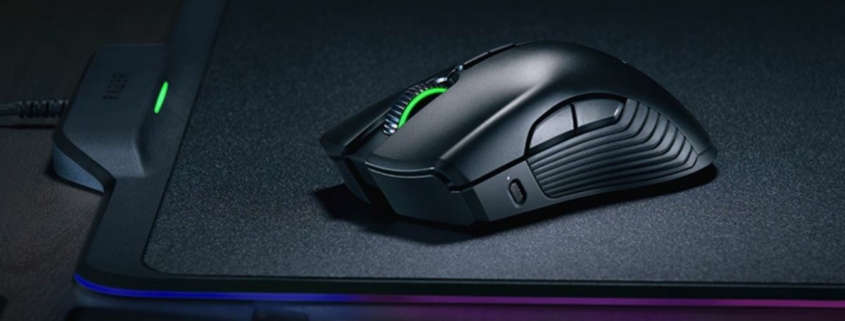Bring back wireless mouse charging mats
As far as gaming peripherals go, I’m a fan of a well-delivered gimmick. The market is so oversaturated with good gamer accessories that without a standout feature many fade into the crowd. Some gimmicks are just there for the headline, like some of these offensively ugly mice (opens in new tab), but often there are solid ideas hidden in there. It’s just a shame that sometimes the ridiculous ideas are the ones that survive, while the good ones are lost to time.
The one loss that has me questioning humanity is the wireless mouse charging pad. Mouse pads have been around ever since we needed balls to roll around on them and have survived thanks to delivering smooth and certain surfaces we can rely on. Not that long ago, genius gaming peripheral innovators realised we could stick RGB lights in these things, and some even went the extra mile to add charging facilities.
The risky nature of the gimmick makes it all the more pleasing when one of these little touches stands out, and actually feels like an improvement over the standard form. Charging pads for wireless mice are a prime example of this, a great way to keep mouse weight down and battery levels up. So why is it that RGB-lit mouse mats are still rampant but none of them can charge my goddamned mouse?
As soon as the tech in wireless mice managed to make functional latency a thing of the past, I’ve been all in on these cableless cursor controllers. I love not having cable drag, or worrying about where it’ll fit on my desk and what I might knock over. The only thing I don’t love about wireless mice is having to charge them, because I tend to forget. But companies seem unwilling to come out with a new wireless mouse and charging mat solution.
That’s why I’m still using a Razer Mamba and Firefly Hyperflux (opens in new tab) combo from what feels like an eternity ago. The Firefly is the wired RGB-lit mousepad that powers the wireless Mamba mouse while it’s in use. It means you always have to use the mouse on the pad, and can’t lift it off for too long, but in ways that still feel very natural to me, and I have a mouse that I never have to charge.
At the time this was one of the lightest wireless mice you could get thanks to this design, at around 90 grams. In 2023, Razer has just announced a new 49g Viper Mini (opens in new tab), which will be the company’s lightest to date. Full-sized wireless kings (opens in new tab) at the moment are closer to the 60g mark, and though I’ve enjoyed the levity of some of them I still haven’t switched my daily cursor-pusher thanks to the convenience of an always ready-to-go mouse.
Razer wasn’t the only company dipping its toes into the charging pad game once upon a time. I remember drooling over Logitech’s PowerPlay (opens in new tab) mat that came out around the same time for its G series gaming mice. You can still get them, but they’re $AUD230 and that’s without a compatible mouse. At the time I believe the future would be full of excellent mousepad and wireless mice combos, but in recent years all I’ve heard was crickets.
HyperX at least met me halfway for a little while there, with some of the brand’s peripherals like the Pulsefire Dart (opens in new tab) featuring QI wireless charging (opens in new tab). It’s not quite the same but at least I can just leave them in the right spot when I walk away and know they’re likely to have charge when I come back later. It also stops me needing cables to charge devices that are wireless for a reason.
What’s worse is it feels like every brand lately is willing to put out its own mouse mat, often in sizes bigger than my desk (opens in new tab), complete with full RGB lighting. These desk coverings are usually made of the same rubberish material across the board, offering little in distinction or even usefulness. If you’re going to make the damned things, and go to the effort of wiring them to light up, then why not make them act as a powersource for my myriad wireless things that could all sit on top?




